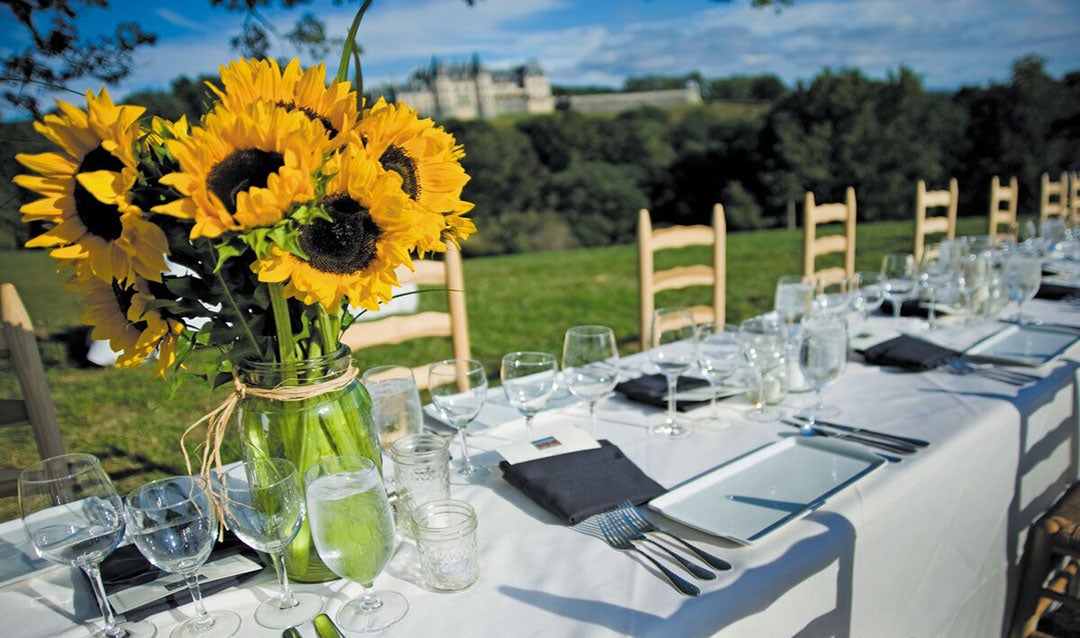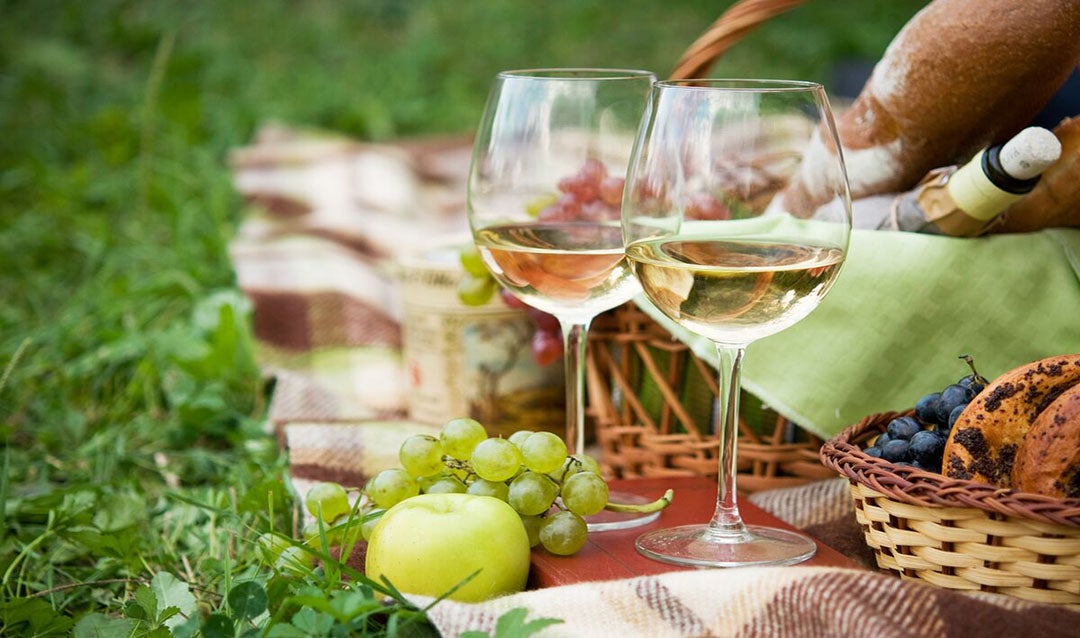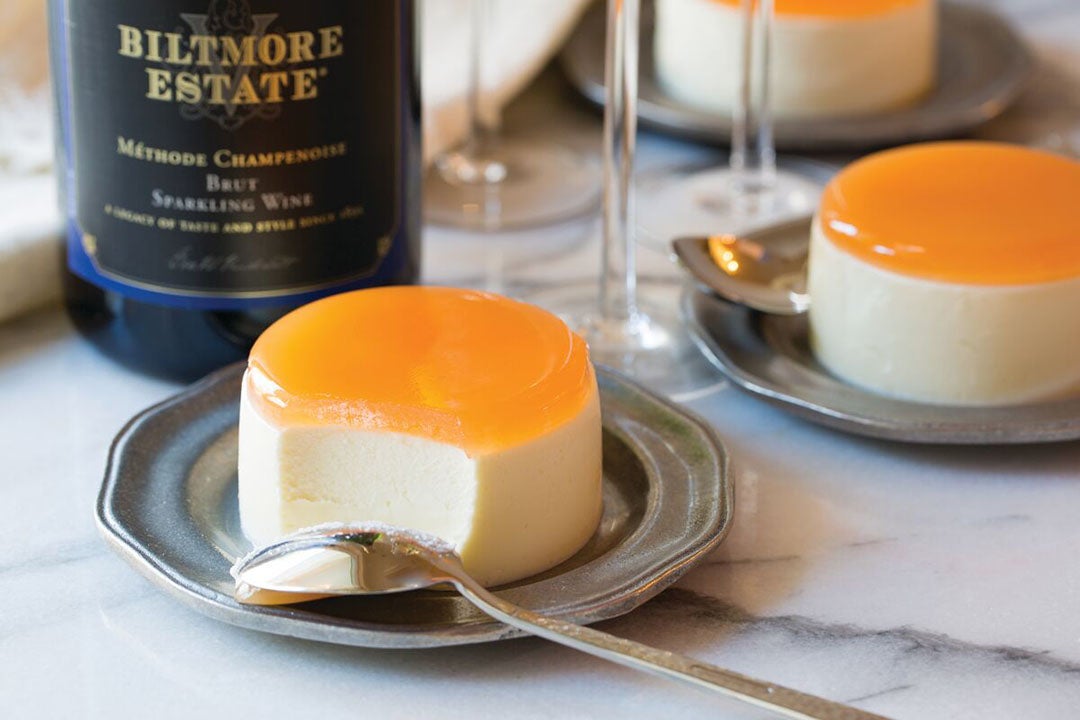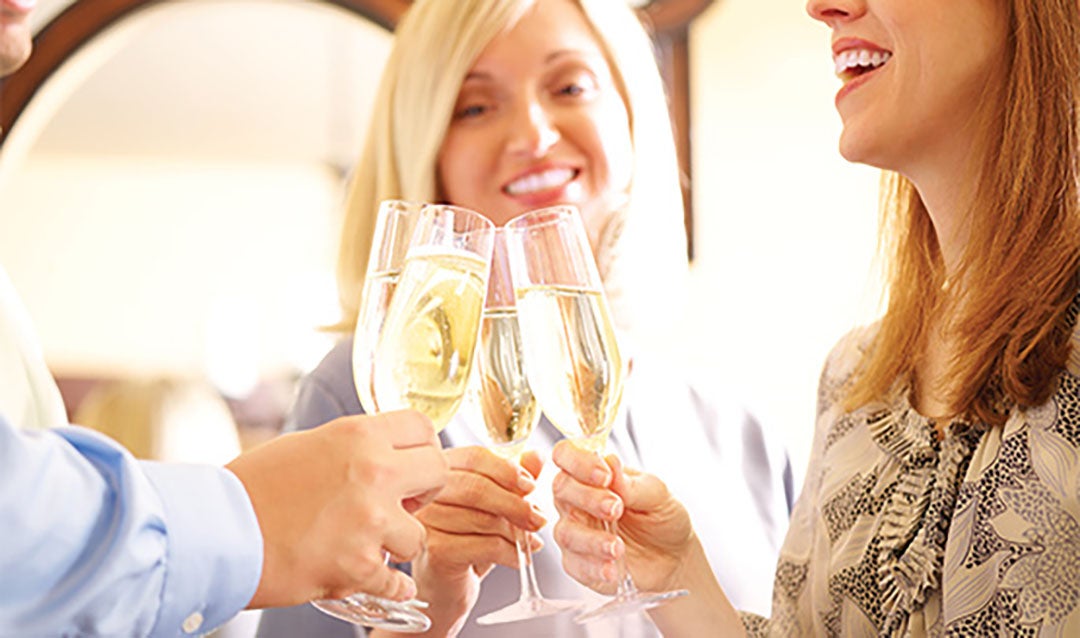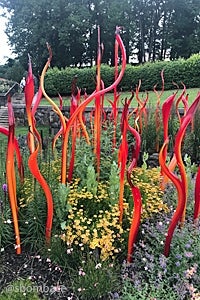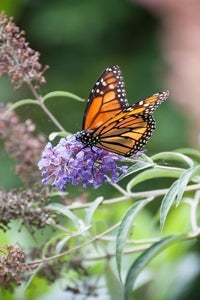Please enjoy this archived content from a Christmas past.
To design Christmas at Biltmore, our Floral Displays team* draws inspiration from the details of America’s Largest Home®, including the style and furnishings of the rooms and objects from Biltmore’s collection displayed within them.
For 2018, let’s explore the stunning holiday décor created for some of the most iconic rooms in Biltmore House, learning how each designer brings their vision to life.
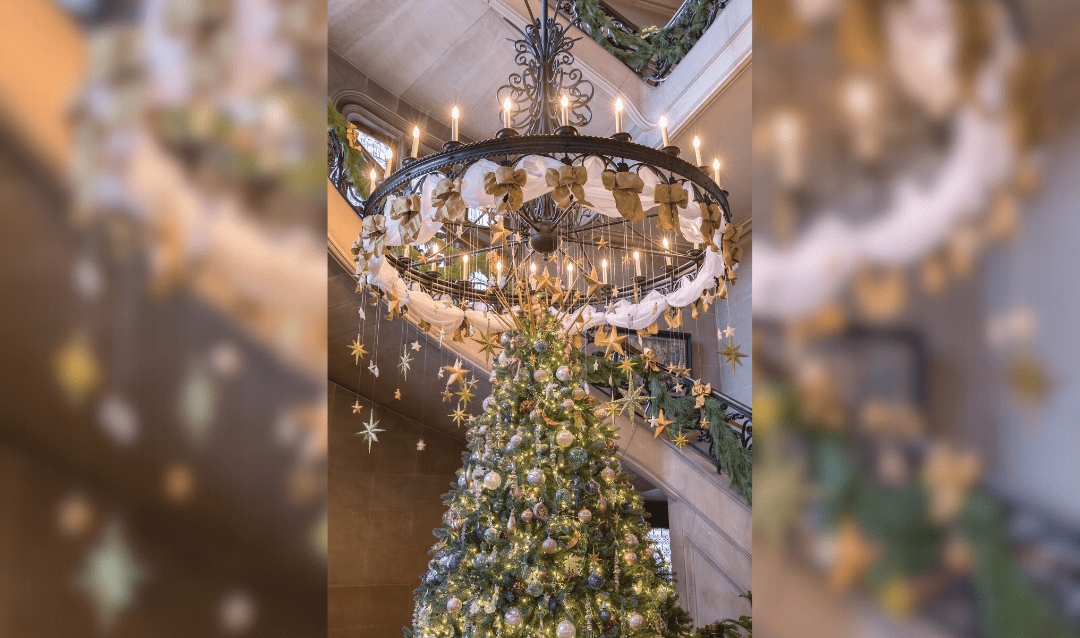
Designing the Vestibule, Entry Hall, and Grand Staircase
“This connected set of open spaces is the first thing guests see when entering Biltmore House,” said Joslyn Kelly, floral designer, “and it sets the tone for their whole visit.”
For the Vestibule, Joslyn used crystal garland and swags accented with gold to create an impression of entering heaven. She placed trees behind the paned glass in that area, adding twinkling lights for a star-like effect.
The heavenly theme continues into the Entry Hall, with soft, iridescent hues of blue, gold, and pink drawn from the painted ceiling in the Library. Look for candelabras on the table above a seasonal display of fresh poinsettias and amaryllis.
“I chose a very different look for the tree under the Grand Staircase this year,” said Joslyn. “I was inspired by the celestial details on the face of the grandfather clock that stands nearby.”
Crowned with suspended stars and featuring charming cherub ornaments, this tree is centered under the Grand Staircase Chandelier, making it appear as though the four-story light is the tree topper.
“The tree looks different at each level, giving our guests a new perspective as they go up and down the Grand Staircase.”
Designing the Breakfast Room
“When you have two paintings by Renoir in a room, that’s a wonderful source of inspiration,” said Sara Merkel, another member of Biltmore’s Floral Displays team.
“The artist painted these after he retired to the Mediterranean, so I’ve pulled out the warm orange and green tones of the region that are featured in both Child with Orange and Young Algerian Girl, plus a bit of blue for the Wedgwood-style fireplace surround.”
In addition to the colors, look for Sara’s décor to incorporate a rich assortment of herbs, olives, fruit, pomanders, and nuts.
Designing the Morning Salon
Designed to appear as though Edith Vanderbilt might be using the space to write out her Christmas cards, Deborah Link of Floral has created a feminine feel with elegant cobalt and gold ribbon and a Victorian tussie-mussie on the desk.
“In addition to those elements, I wanted to hint at both George and Edith Vanderbilt’s Dutch origins with classic blue-and-white Delft-style ornaments on the tree,” said Deborah.
Designing Mrs. Vanderbilt’s Bedroom
“We’re telling a very special story about George and Edith Vanderbilt this year,” said floral designer Kyla Dana. “The tree décor is inspired by the first Christmas of their courtship, which took place in Paris.”
According to archival information, George’s close friend Willie Field secretly took one of George’s stockings and gave it to Edith who filled it with treats including a copy of Quo Vadis—a novel George Vanderbilt enjoyed.
When you enter Mrs. Vanderbilt’s Bedroom, note that the room features a lush mix of purples, ambers, and oranges, all inspired by the colors of the distinctive oval ceiling.
Designing the Billiard Room
Lucinda Ledford with Biltmore Floral sought to bring the great outdoors into Biltmore House with details drawn from Buckspring Lodge—the Vanderbilts’ rustic retreat built on the slopes of Mt. Pisgah.
“Since this room features sporting prints and other elements of outdoor pursuits,” said Lucinda, “I utilized natural colors and textures such as feathers and pine cones to introduce a woodland tone. There are also small framed photographs of the Vanderbilt family on the tree as ornaments.”
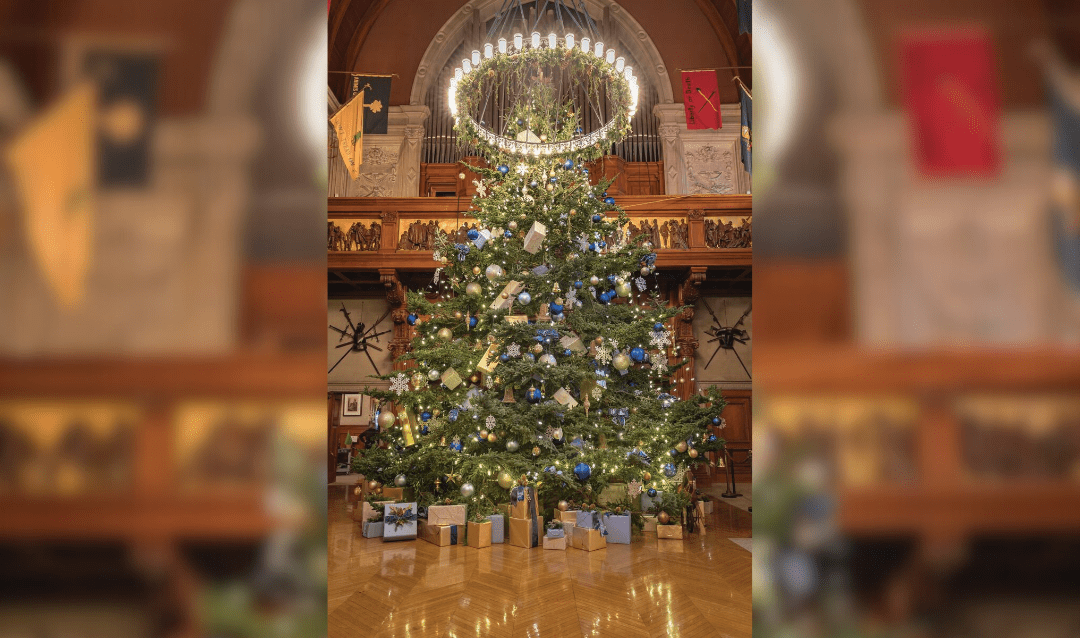
Other 2018 Christmas at Biltmore Highlights:
- Banquet Hall
- From the 35-foot fresh Fraser fir at one end to the triple fireplaces at the other, the Banquet Hall is a traditional guest favorite and one of the most beloved rooms in Biltmore House.
- Library
- Themed around George Vanderbilt’s love of travel—especially nautical travel—the décorations will include ships, stars, and rope knots.
- Oak Sitting Room
- Look for colorful décor in rich jewel tones of red, cobalt, gold, and green, all drawn from the room’s splendid Axminster—the only rug of English origin in Biltmore House.
- Watson Room
- As the sole room featuring twin beds, it’s easy to imagine children staying here on Christmas Eve. Look for stockings hanging on the bedposts and a small floor tree decorated with dolls, beads, and German blown glass ornaments.
- South Tower Room
- This charming scene features a table with paper, ribbon, and gifts since archival notes tell us this is where Edith Vanderbilt wrapped her gifts for the Christmas season!






 The artist begins sketching label designs
The artist begins sketching label designs

 Pour on the cheer with Biltmore wines
Pour on the cheer with Biltmore wines Between the bench and the palm towering overhead, a lush Cycad makes a photo-worthy backdrop
Between the bench and the palm towering overhead, a lush Cycad makes a photo-worthy backdrop 




 ‘Queen of the Night’ cactus in bloom
‘Queen of the Night’ cactus in bloom
 Cattails and Copper Birch Reeds aglow in front of the Conservatory during Chihuly Nights at Biltmore
Cattails and Copper Birch Reeds aglow in front of the Conservatory during Chihuly Nights at Biltmore One of Chihuly’s three Burnished Amber, Citron, and Teal Chandeliers inside the Conservatory at Biltmore
One of Chihuly’s three Burnished Amber, Citron, and Teal Chandeliers inside the Conservatory at Biltmore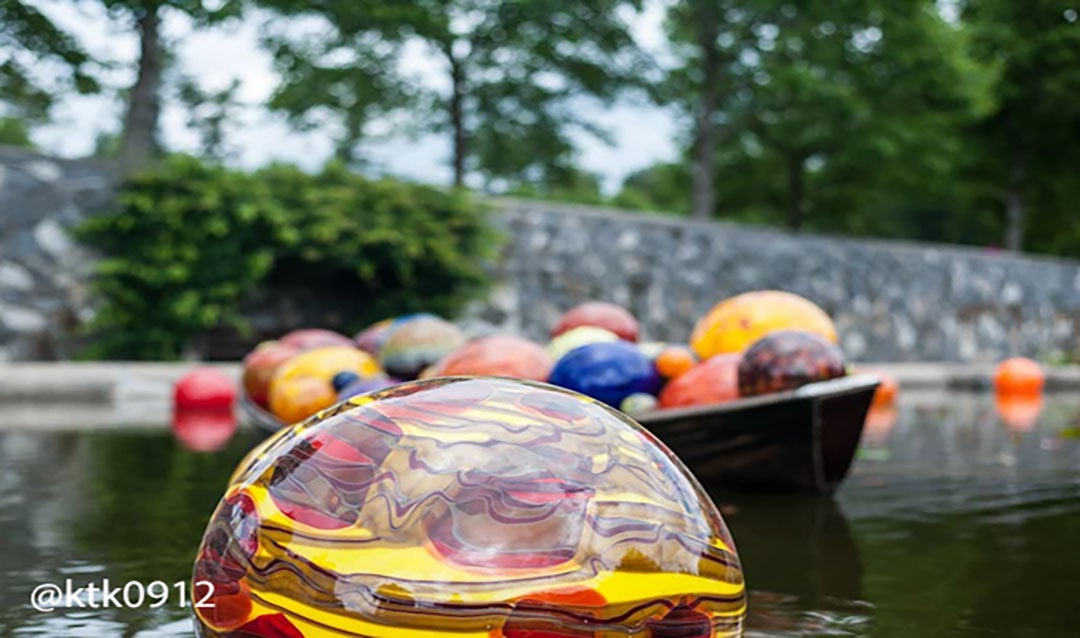
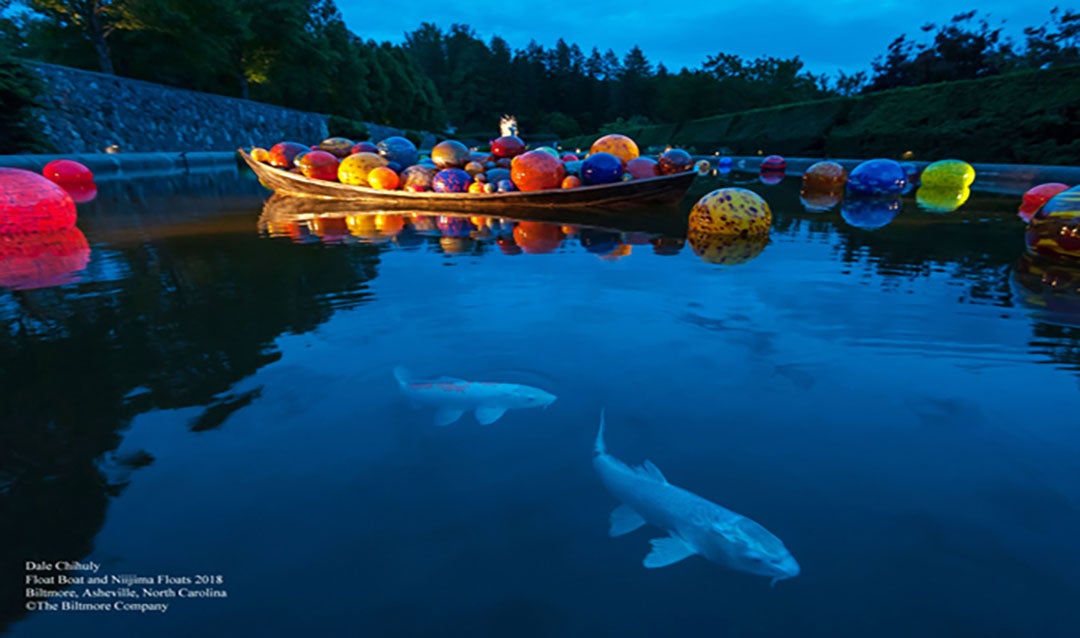
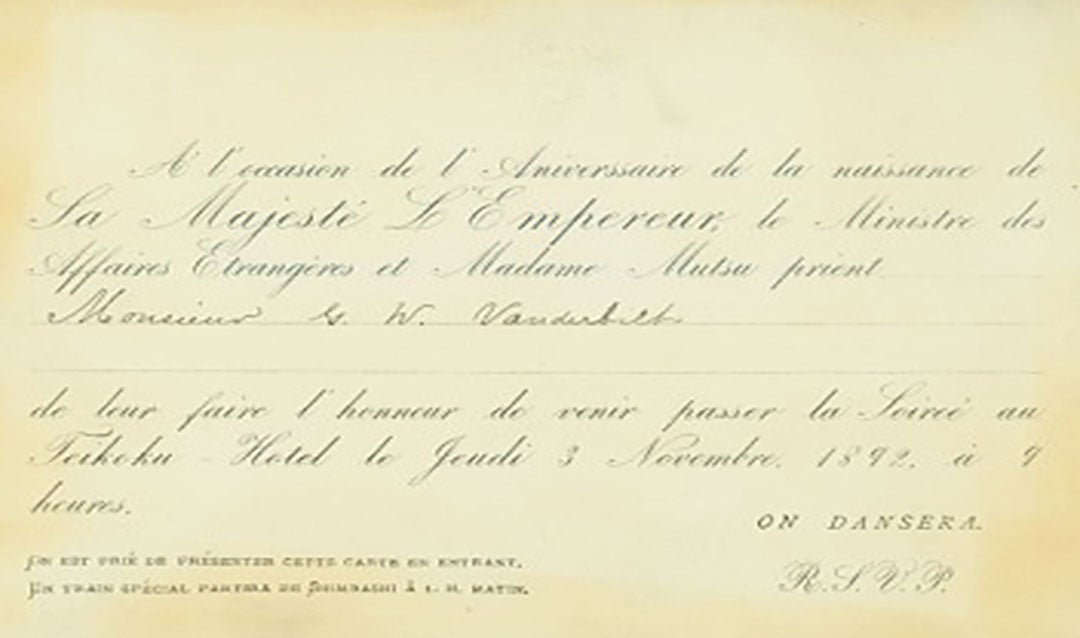
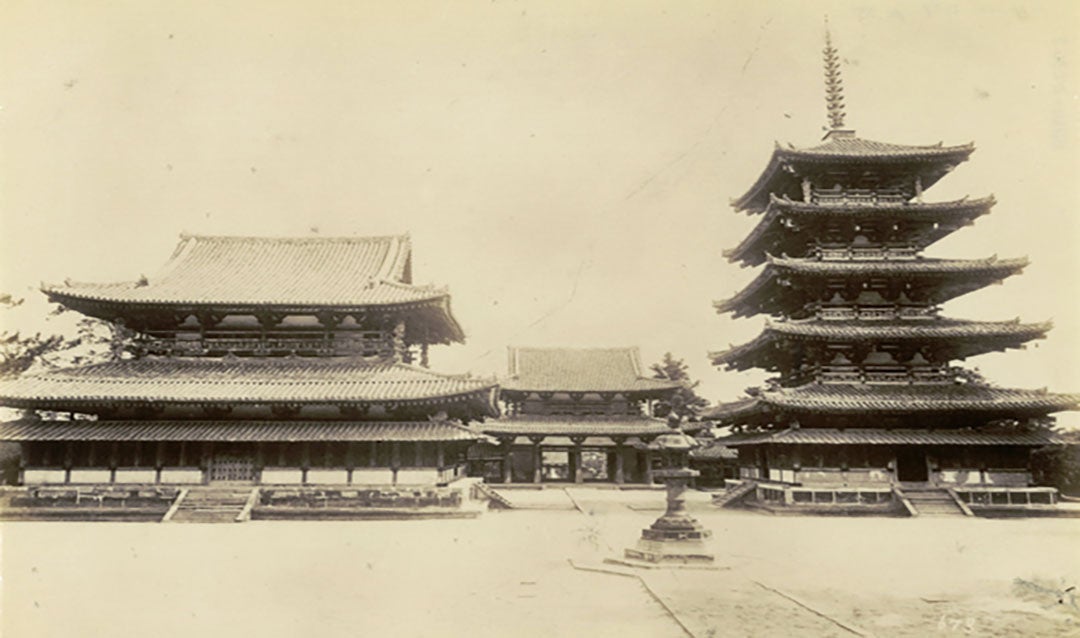
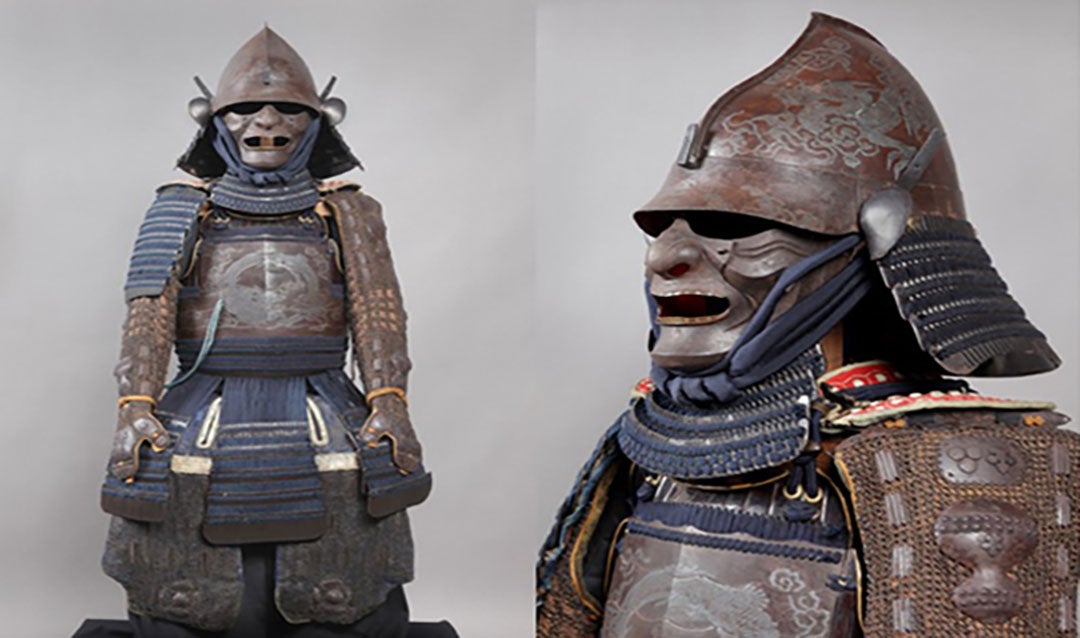
crop.jpg)



